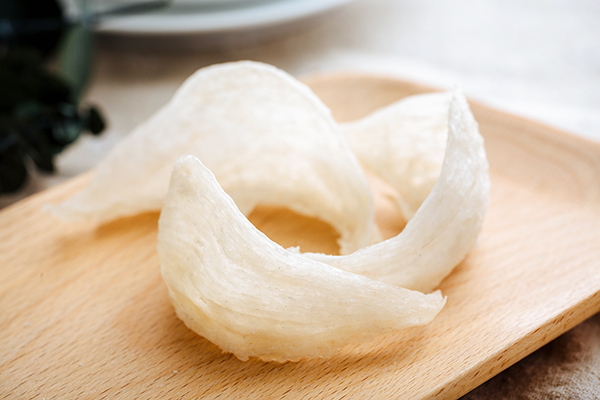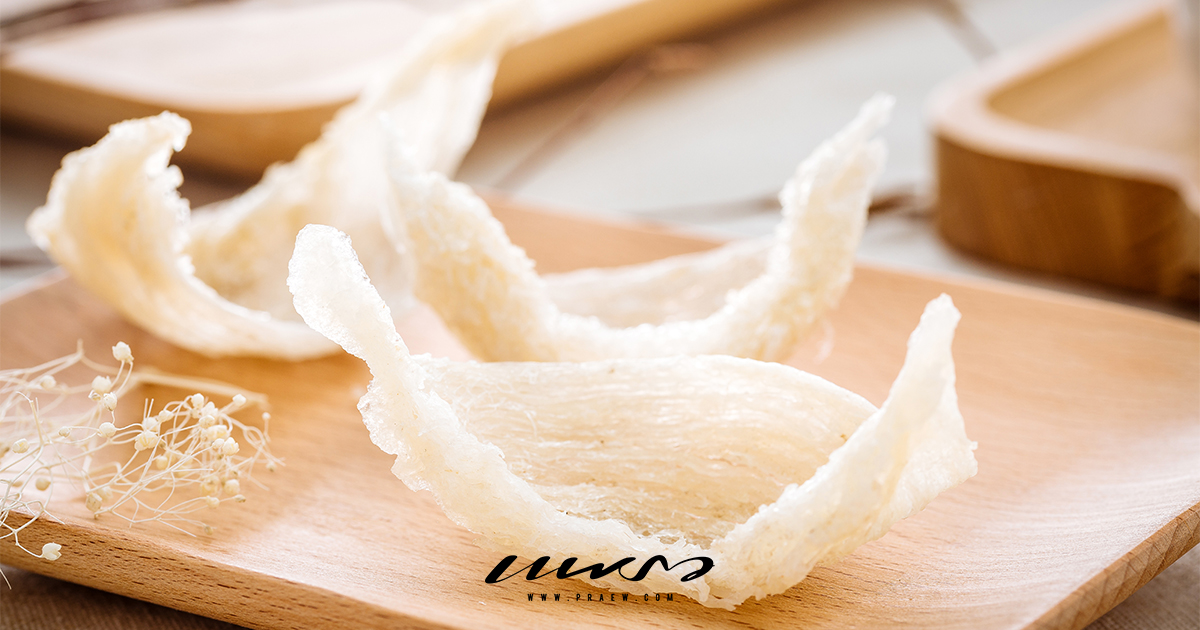สาวๆ รู้หรือไม่? สารสำคัญในรังนกที่มีชื่อว่า “NANA (นานะ)” มีประโยชน์มากกว่าที่คิด ถือเป็นตัวช่วยที่ทำให้ผู้หญิงใช้ชีวิตสวยสตรองได้อย่างเต็มที่เลยล่ะ
ขึ้นชื่อว่าผู้หญิง ไม่ว่าจะเป็นวัยไหนก็ตาม บอกเลยว่าเรื่องความดูดีและความสตรอง ทั้งภายนอกและภายในต้องมาเป็นอันดับหนึ่งเสมอ จึงทำให้เกิดการค้นหาสารพัดวิธีในการดูแลตัวเอง ศาสตร์ไหนที่เขาว่าดีว่าเด็ด เป็นต้องลองให้รู้กันไป ซึ่งหนึ่งในศาสตร์ที่ได้รับความนิยม ก็ต้องยกให้กับการกิน

โดยหากจะให้แนะนำอาหารสักหนึ่งอย่าง ที่จะมาเป็นตัวช่วยให้ผู้หญิงสตรองได้แบบสวยๆ แพรวดอทคอม ขอยกให้กับ “รังนก” อาหารระดับตำนานที่มีจุดเริ่มต้นมาจากการเป็นเครื่องเสวยขององค์ฮ่องเต้ ซึ่งชาวจีนนิยมรับประทานรังนก เพราะเชื่อว่ารังนกเป็นอาหารบำรุงสุขภาพ บำรุงผิวพรรณ ช่วยให้อายุยืน ผิวพรรณดี และชะลอความชรา ซึ่งรังนกนั้นหาได้ยากและมีราคาแพง จึงได้รับฉายาว่า “คาร์เวียร์แห่งโลกตะวันออก” หรือ “ทองคำขาวแห่งท้องทะเล” แต่เชื่อว่าหลายคนยังไม่เคยลิ้มลอง เพราะคิดว่าเป็นอาหารเสริมสุขภาพสำหรับผู้สูงวัยเท่านั้น แต่ความจริงแล้ว รังนกจัดเป็นอาหารที่เหมาะกับทุกเพศทุกวัย โดยเฉพาะผู้หญิงอย่างเราๆ ที่บอกเลยว่ากินแล้วดีแน่นอน เพราะมีส่วนประกอบของสารสำคัญอย่าง “NANA (นานะ)” ที่มีประโยชน์ต่อสุขภาพร่างกาย และอาจมีผลต่การทำงานของเซลล์ในระบบภูมิคุ้มกัน

NANA (นานะ) (N-Acetyl-Neuraminic Acid) หรือ กรดไซอะลิค (Sialic Acid) เป็นองค์ประกอบของไกลโคโปรตีน ซึ่งเป็นโปรตีนคุณสมบัติพิเศษที่พบในรังนก โดยพบ NANA (นานะ) ในรังนกประมาณ 9% แต่พบ NANA (นานะ) ในเนื้อไก่และเนื้อเป็ดเพียง 0.02% และพบ NANA (นานะ) ในเนื้อปลาแซลมอนเพียง 0.01%
สำหรับประโยชน์ต่อสุขภาพร่างกายของ “NANA (นานะ)” คือช่วยเสริมการทำงานของระบบภูมิคุ้มกัน โดยสารสำคัญในรังนกมีฤทธิ์ยับยั้งการติดเชื้อไวรัส เช่น ไวรัสไข้หวัดใหญ่ โปรตีนแบบพิเศษที่มีในรังนกจะไปจับเชื้อไวรัส เพื่อป้องกันไม่ให้ไวรัสเข้าสู่เซลล์ อีกทั้ง “NANA (นานะ)” ยังช่วยเพิ่มการทำงานของเม็ดเลือดขาว ซึ่งทำหน้าที่ช่วยปกป้องร่างกายจากเชื้อโรคต่างๆ ทำให้สามารถออกไปใช้ชีวิตแบบสวยสตรองได้

ส่วนประโยชน์ต่อผิวพรรณของ “NANA (นานะ)” ที่หากสาวๆ รู้แล้วต้องปลื้มสุดๆ แน่นอน คือช่วยจัดการกับความหมองคล้ำของผิว โดยยับยั้งการทำงานของเอนไซม์ไทโรซิเนส (Tyrosinase) ที่เกี่ยวข้องกับการสร้างเม็ดสีเมลานินของเซลล์ผิวหนัง ดังนั้นนอกจากการกินรังนกแล้ว ก็พบว่าในปัจจุบันมีการใส่สารสกัดรังนกลงในสกินแคร์
พอรู้คุณค่าของ “NANA (นานะ)” ในรังนกแท้ ที่ดีต่อสุขภาพร่างกายและผิวพรรณขนาดนี้ เชื่อว่าสาวๆ คงอยากหันมากินรังนกเป็นประจำกันตั้งแต่ตอนนี้เลยล่ะ ซึ่งนี่แหละคือเคล็ดลับสวยสตรองของผู้หญิงยุคใหม่ที่ แพรวดอทคอม พราวด์ทูพรีเซ้นต์ เพราะนอกจากจะดีงามมากแล้ว ยังทำได้ง่ายๆ ในทุกวันอีกด้วย
เอกสารอ้างอิง:
- Thorburn C. 2014. The Edible Birds’ Nest Boom in Indonesia and South-east Asia. Food culture society. Vol.17, Issue 4; 535-554.
The Edible Birds’ Nest Boom in Indonesia and South-east Asia_A Nested Political Ecology
- Chua L.S. and Zukefl S.N. 2016. A comprehensive review of edible bird nests and swiftlet farming. Journal of Integrative Medicine. Vol. 14, No.6; 415-428.
http://dx.doi.org/10.1016/S2095-4964(16)60282-0 A_comprehensive_review_of_edible_bird_nests_and_2016_Journal_of_Integrative
- Tai S.K., Koh R.Y., Ng K.Y. and Chye S. M. 2017. A Mini Review on Medicinal Effects of Edible Bird’s Nest. Lett Health Biol Sci. Vol. 2, Issue 1; 65-67. DOI: 10.15436/2475-6245.17.016.
A_Mini_Review_on_Medicinal_Effects_of_Edible_Bird’s_Nest
- Hamzah Z., Ibrahim N.H., J S., Hussin K., Hashim O. and Lee B.B. 2013. Nutritional properties of edible bird nest. Journal of Asian Scientific Research. 3(6); 600-607.
Preliminary_Study_of_the_Nutritional_Content_of_Malaysian_Edible_Bird’s_Nest
- Zhao R., Li G., Kong X.J., Huang X.Y., Li W., Zeng Y.Y. and Lai X.P. 2016. The improvement effects of edible bird’s nest on proliferation and activation of B lymphocyte and its antagonistic effects on immunosuppression induced by cyclophosphamide. Drug Design, Development and Therapy. 10; 371-381.
DDDT-88193-in-vitro-and-in-vivo-immune-enhancing-effects-of-edible-bird
- Marcone M.F. 2005. Characterization of the Edible Bird’s Nest the “Caviar of the East”. Food Research International. 38, 1125-1134. http://dx.doi.org/10.1016/j.foodres.2005.02.008
- Daud N.A., Yusop S.M., Babji A.S., Lim S.J., Sarbini S.R. and Yan T.H. 2019. Edible Bird’s Nest: Physicochemical Properties, Production, and Application of Bioactive Extracts and Glycopeptides. Food Reviews International. 1-19.
https://doi.org/10.1080/87559129.2019.1696359
- Li H. and Fan X. 2014. Quantitative analysis of sialic acids in Chinese conventional foods by HPLC-FLD. Open Journal of Preventive Medicine. 4(2); 57-63.
https://www.scirp.org/journal/PaperInformation.aspx?PaperID=42604
- Fucui M. and Daicheng L. 2012. Sketch of the edible bird’s nest and its important bioactivities. Food Research International. 48(2); 559–567.
https://www.sciencedirect.com/science/article/abs/pii/S0963996912001895
- Chan K., Zheng K.Y., Zhu K.Y., Dong T.T. and Tsim K.W. 2013. Determination of free N-acetylneuraminic acid in edible bird nest: A development of chemical marker for quality control. The Journal of Ethnobiology and Traditional Medicine. 120; 620-628.
- Lun Chan G.K., Fai Wong Z.C., Ching Lam K.Y., Wai Cheng L.K., Zhang L.M., Lin H., et al. 2015_ Edible Bird’s Nest, an Asian Health Food Supplement, Possesses Skin Lightening Activities: Identification of N-Acetylneuraminic Acid as Active Ingredient. Journal of Cosmetics, Dermatological Sciences and Applications. 5; 262-274.
The Edible Birds’ Nest Boom in Indonesia and South-east Asia A Nested Political Ecology
- Guo C.T., Takahashi T., Bukawa W., Takahashi N., Yagi H., Kato K. et al. 2006. Edible bird’s nest extract inhibits influenza virus infection. Antiviral Research. 70; 140–146.
https://www.ncbi.nlm.nih.gov/pubmed/16581142
- Kong Y.C., , K H Chan K.H. and Ng M.H., et al. 1986. Potentiation of mitogenic response by extract of the swiftlet’s (Collocalia) nest. Biochem Intern. 13;521-531. https://pubmed.ncbi.nlm.nih.gov/3790144/
- Kong Y.C., Keung W. M., Yip T.T., Ko K.M., Tsao S.W., Nget M.H. 1987. Evidence that Epidermal Growth Factor is present in swiflet’s (Collocalia) nest. Comp. Biochem. Physiol. 87B(2);221-226. https://www.ncbi.nlm.nih.gov/pubmed/3497769
- Shim, E. K-S; Lee, S-Y. 2018. Nitration of Tyrosine in the Mucin Glycoprotein of Edible Bird’s Nest Change Its color from White to Red. J. Agri. Food Chem. 66; 5654-5662.
https://www.ncbi.nlm.nih.gov/pubmed/29783841
- ประมวลสารสนเทศพร้อมใช้เรื่อง รังนก สำนักหอสมุดและศูนย์สารสนเทศวทิ ยาศาสตร์และเทคโนโลยี กรมวิทยาศาสตร์บริการ กระทรวงวิทยาศาสตร์และเทคโนโลยี 2559

 account_circle
account_circle